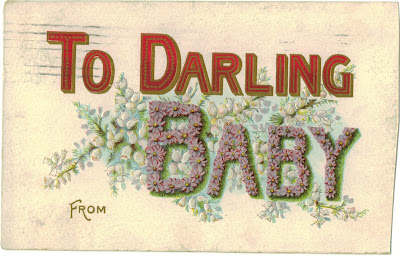If you know or suspect you have African roots, or you're merely curious as to how genealogists of African descent undertake the complicated challenges of their particular research, then may I suggest four excellent blogs by those who have been researching and/or blogging their genealogy for some time: Craig Manson blogs about his African, Native American and Caucasian roots at GeneaBlogie, and brings a unique and professional perspective from his service as an officer in the military and experience as a judge and law professor to the geneablogging world. Taneya Koonce McClellan is a librarian at Vanderbilt University who maintains six(!) genealogy blogs and a website (her main blog is Taneya's Genealogy Blog). Her blogs contain many historical articles and notices she gleans from old newspapers in Tennessee and North Carolina. George Geder is a professional photographer, photograph restorer, writer, and lecturer, as well as a forum manager for the book forum at AfriGeneas. I especially enjoy his Wordless Wednesday posts on Genealogy~Photography~Restoration when he uses an ancestral photo and then later blogs about the history of the individual(s) featured within it. And Jennifer Cotten Campbell at But Now I'm Found: Genealogy in Black and White (who also has other blogs and a website) painstakingly details the complexities of surname changes and brick walls of researching enslaved ancestors. Other genealogy blogs on African-American research can be found at Chris Dunham's Genealogy Blog Finder: African-American Blogs.
Back when I was a homeschooling parent, I signed up to receive educational materials from the United States Postal Service. I was recently sent a packet on Black History Month and the release of the 31st stamp in the Black Heritage series, which features Charles W. Chesnutt (1858–1932), "a pioneering writer recognized today as a major innovator and singular voice among turn–of–the–century literary realists. In novels such as The Marrow of Tradition and short stories such as those collected in The Conjure Woman he probed the color line in American life." Although he could easily have "passed" as a white man, Chesnutt used his influence and his author's voice to examine and expose racial issues during a time of great civil injustice in American history. If you are interested in receiving the USPS educational kits, visit their classroom resources page.
Back to the subject of genealogy bloggers: Tim Abbott of Walking the Berkshires posted a series called "Race and Memory" in which he shares his thoughts and observations of race relations from the time of his ancestors in colonial America through the Civil Rights era and to the present day. These essays are sober, touching on complexities, and reminding us that American slavery was not just a Southern issue. We sometimes forget that at one time, slavery was present in all the original colonies, and that during the Civil War, several of the Union states were slave states until the Emancipation Proclamation.
Several months ago, the family of my brother-in-law and our own family gathered together to watch the DVD of Amazing Grace, the story of William Wilburforce, the Member of Parliament who was instrumental in ending the slave trade in the British Empire (which was also a catalyst for abolitionism in the United States). The plot focuses not so much on the issues of slavery, but on the life of a man who lost his health--and nearly his life--in his mission to put an end to this inhumanity. Wilburforce's mentor was John Newton, writer of the lyrics of "Amazing Grace." At about the time I saw the movie, I was sent a link to a YouTube video of Wintley Phipps that provides a possible explanation for the tune of famous hymn. This video also gives an interesting music lesson about Negro Spirituals and the black notes of the piano.
Unfortunately, I missed PBS's African-American Lives 2 (I'm not much of a television watcher, and so often miss interesting shows when they air). However, I was excited to see that there are major clips available on PBS's website. My local public library is a wonderful resource for many PBS series available on DVD, and I will be looking for this and the first series to take home and watch, hopefully during my upcoming Spring Break.
Last on my list of African Roots links: I received the following interesting book review from Rick Robert's Global Genealogy Newsletter about the book To Stand and Fight Together.
In 1812, a 67-year-old black United Empire Loyalist named Richard Pierpoint helped raise “a corps of Coloured Men to stand and fight together” against the Americans who were threatening to invade the tiny British colony of Upper Canada.
Pierpoint‘s unique fighting unit would not only see service throughout the War of 1812, it would also be the first colonial military unit reactiviated to quash the Rebellion of 1837. It would go on to serve as a police force, keeping the peace among the competing Irish immigrant gangs during the construction of the Welland Canal.
Pierpoint and the Coloured Corps are the central focus, but the sidebars featuring fascinating facts about the rise and fall of slavery in North America and the state of African-Canadians in early Canada provide an entertaining and informative supplement. Among other tidbits, readers will find out why “Good Queen Bess” launched the British slave industry and how Scottish pineapples are connected to the American Declaration of Independence.
Steve Pitt‘s first book, Rain Tonight: A Tale of Hurricane Hazel, was nominated for the Silver Birch, Red Cedar, and Rocky Mountain awards. He has been published in many magazines and newspapers, including Toronto Life, Canadian Family.

















